Responsive Design Vs A Progressive Web App
Mobile consumers have been growing steadily, and it's expected that more eCommerce sales will be on mobile than through traditional web browsing by 2021.
To meet these demands, eCommerce companies need to offer intuitive and accessible interfaces that make mobile purchases quick and easy - or risk being left behind.
Many eCommerce websites, however, are not optimized for mobile, and it's less likely that users will download a native app just to make a purchase. eCommerce companies need a digital store that has the best of both worlds.
That's where progressive web apps (PWAs) come in.
Want to know more about Progressive Web App (PWA)? Here's what you'll find in this article:
- What is a Progressive Web App (PWA)?
- Progressive Web App attributes
- PWAs vs. responsive websites
- Should you use a PWA or a responsive website?
- PWAs vs. native apps
- Should you use a PWA or a native app?
- TL;DR: Responsive website vs native app vs Progressive Web App (PWA)
- How does a Progressive Web App (PWA) work?
- Service worker
- Web manifest
- Transport Layer Security (TLS)
- The benefits of a Progressive Web App
- It's faster
- It's better for SEO
- It reduces data needs
- There's no need for app stores
- It reduces development costs
- It leads to better user experiences
- It leads to better engagement
- It can increase conversions
- Two drawbacks of Progressive Web Apps
- You lose app store traffic
- Devices have access restrictions
- Five ways a PWA can improve your eCommerce shopping experience
- Send push notifications or alerts
- Login via social accounts
- Allow shopping without internet
- Track unique analytics
- Simplify web payments processing
- Progressive Web Apps (PWA) eCommerce case studies
- Debenhams: 40% increase in mobile revenue
- AliExpress: 84% increase in iOS conversions
- Flipkart: 40% higher re-engagement rate
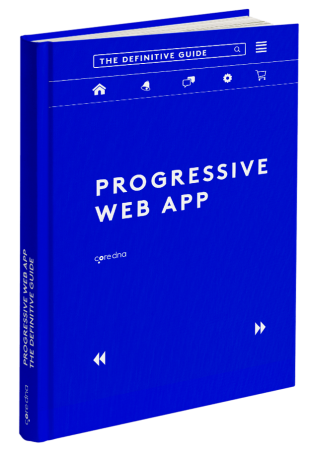
The ultimate guide to Progressive Web App (PWA)
Everything you need to know about Progressive Web App (PWA); how does it work, the pros and cons, and many more.
What is a Progressive Web App (PWA)?
A progressive web app is a website that looks and feels like a native mobile app. PWAs run in the browser, so there's no need to download the app from the Google Play Store or iOS App Store.
PWAs are meant to eliminate a range of issues from slow networks to data limitation or complete lack of connectivity. Websites that meet all the requirements of a PWA leverage the latest web technologies to provide a reliable, fast, and engaging user experience.
Twitter is one example of a progressive web application. Go ahead and log into your Twitter account via your smartphone's browser. Ta-da! You're now using a PWA that's capable of performing real-time notifications, offline notifications, and other app-like functions.
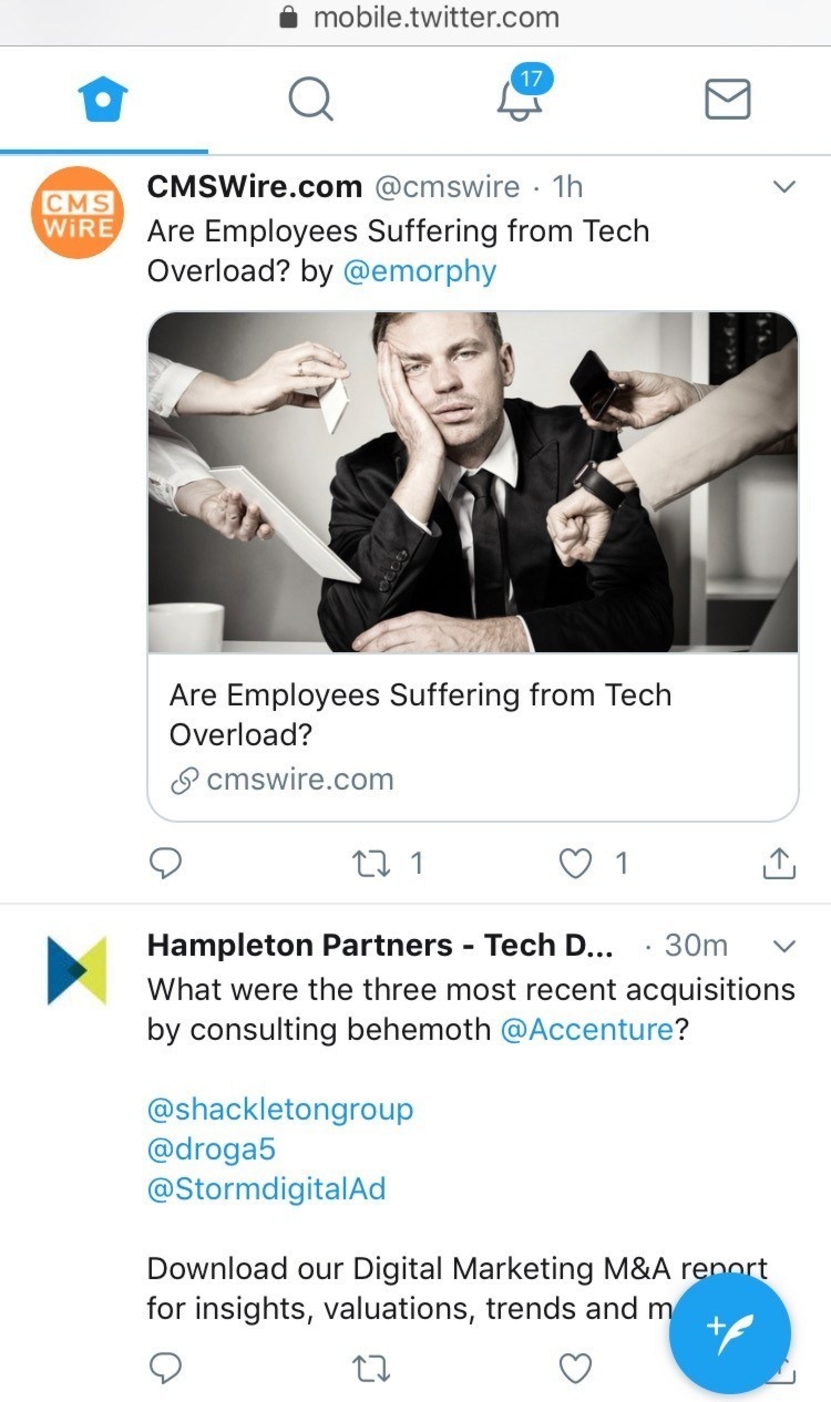
(Progressive Web App example: Twitter)
Another progressive web app example can be found in Gmail. Again, log into your Gmail account via your smartphone's browser, and you'll experience an app-like experience that allows you to individually select emails, label them, move them between folders, and so forth. You'll also see new emails drop into your inbox in real-time.
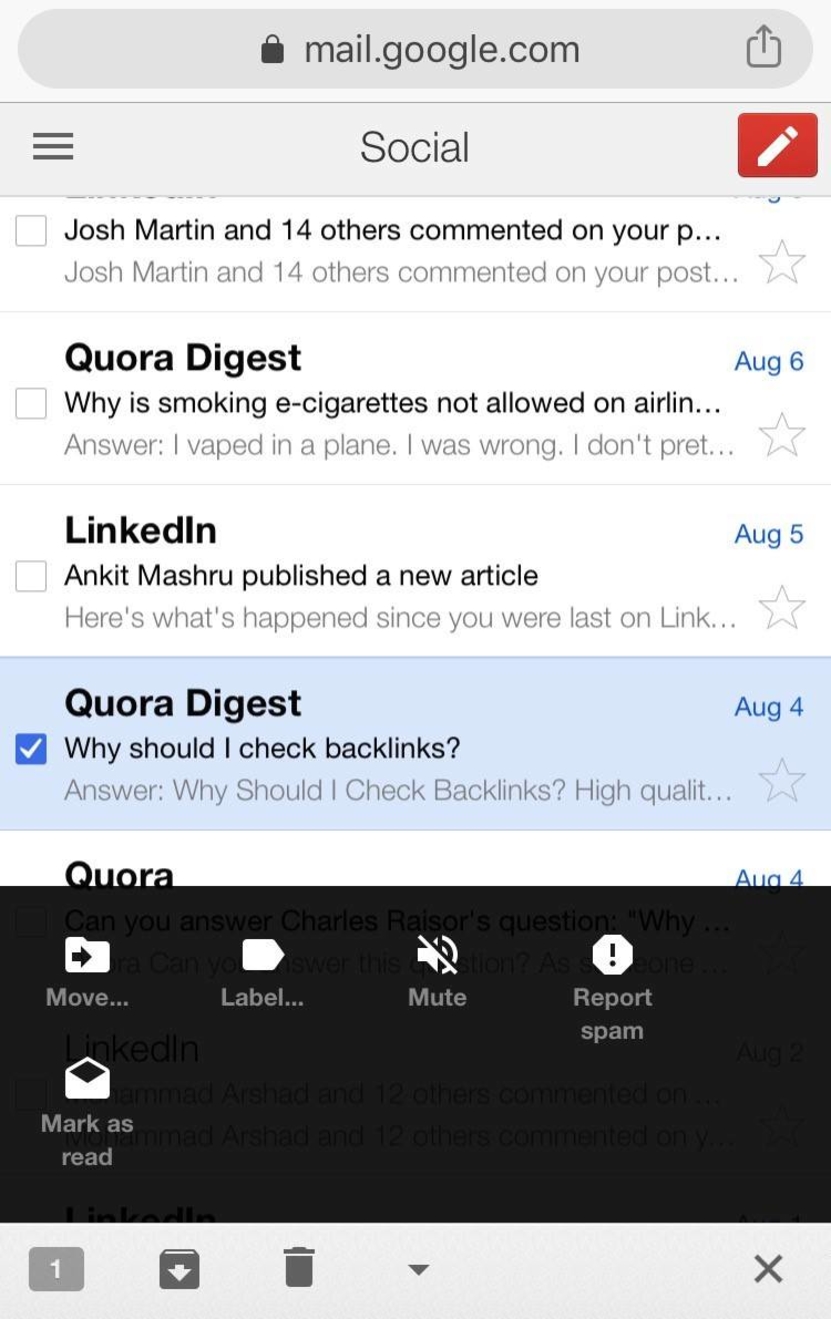
(Gmail is another PWA example)
Progressive Web App attributes: What makes a PWA?
Let's get nostalgic for a moment. The term Progressive Web App was coined in 2015 by Alex Russell. Together with Frances Berriman, Russell "enumerated the attributes of [a] new class of applications" based on the gradual and powerful evolution of modern browsers. Here are those attributes as Russell and Berriman envisioned them:
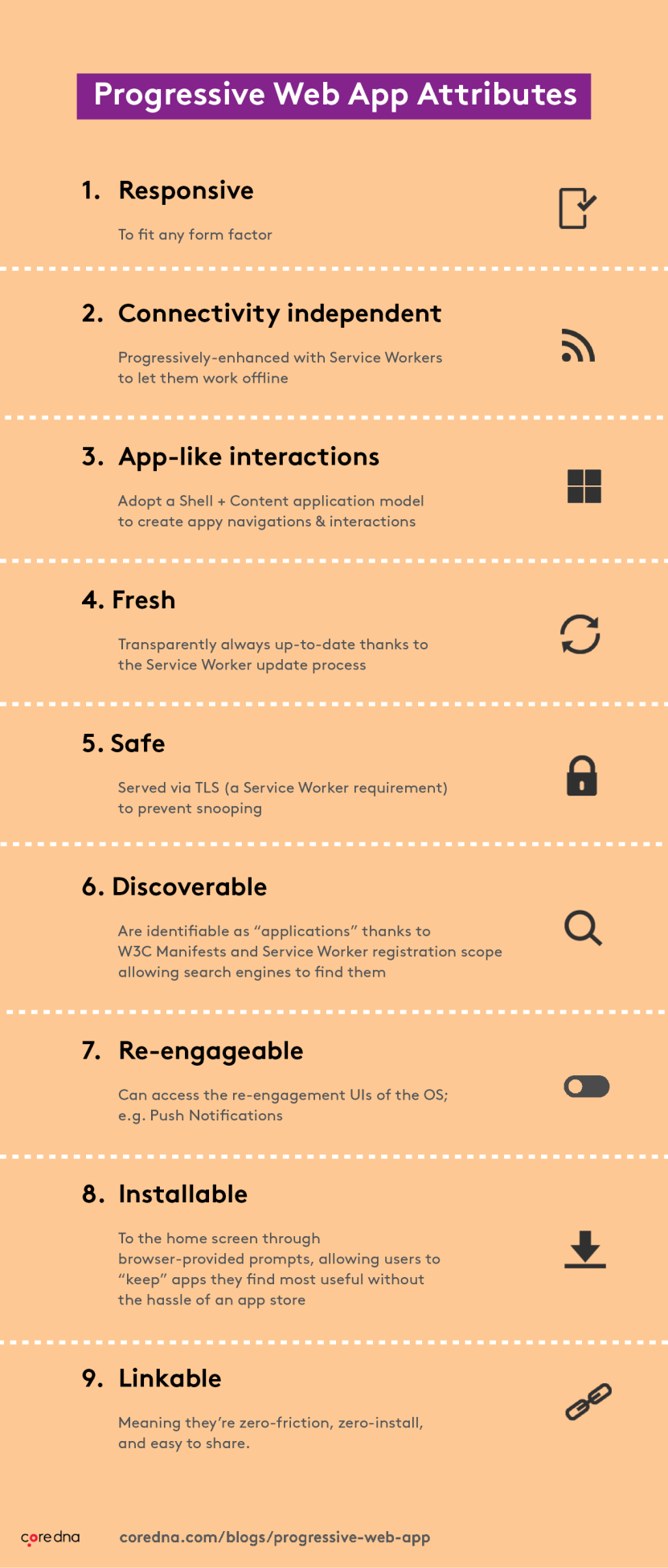
- Responsive: To fit any form factor
- Connectivity independent: Progressively-enhanced with Service Workers (we'll explain these in more detail below) to let them work offline
- App-like-interactions: Adopt a Shell + Content application model to create appy navigations & interactions
- Fresh: Transparently always up-to-date thanks to the Service Worker update process
- Safe:Served via TLS (a Service Worker requirement) to prevent snooping
- Discoverable: Are identifiable as "applications" thanks to W3C Manifests and Service Worker registration scope allowing search engines to find them
- Re-engageable: Can access the re-engagement UIs of the OS; e.g. Push Notifications
- Installable: To the home screen through browser-provided prompts, allowing users to "keep" apps they find most useful without the hassle of an app store
- Linkable: Meaning they're zero-friction, zero-install, and easy to share.
PWAs vs. responsive websites
Responsive websites were the next logical step when mobile became popular. It let companies offer a better experience for mobile users, without the costs of developing native apps. This also means that responsive websites don't have capabilities like offline support, push notifications, and other native-like features that users expect on their phones. As we'll see later, these features can drive customer engagement and conversions, so eCommerce companies may want to consider converting your responsive website into a fully-functioning PWA.
Should you use a PWA or a responsive website?
If you require native-app features like push notifications, offline support, and an installable app, then a PWA is probably the best option for you. If your project only requires a seamless browsing experience across device and browsers, then perhaps a responsive website is good enough for now.
PWAs vs. native apps
Native apps are built to run on a specific operating system like Android or iOS. Developers need to use specific languages like Java or Swift to build the apps, or give up some of the native look and feel with a cross-platform development tool like React native. Once built, the app must be submitted and reviewed by the Google Play or Apple store to make sure it's up to each platform's standards. All in, this process can take months.
PWAs sidestep all of this because they're just an extension of your website with newer web features that offer a more native-like experience. You don't deal with app stores, and the technologies are standard for frontend developers.
Should you use a PWA or a native app?
If your project requires open access from a single URL and you don't have a huge team of developers with cross-platform knowledge of Android and iOS, then a PWA is probably the best option. If you just want a native-app experience and have the development budget, then you could go with a native app.
TL;DR: Responsive website vs native app vs Progressive Web App (PWA)
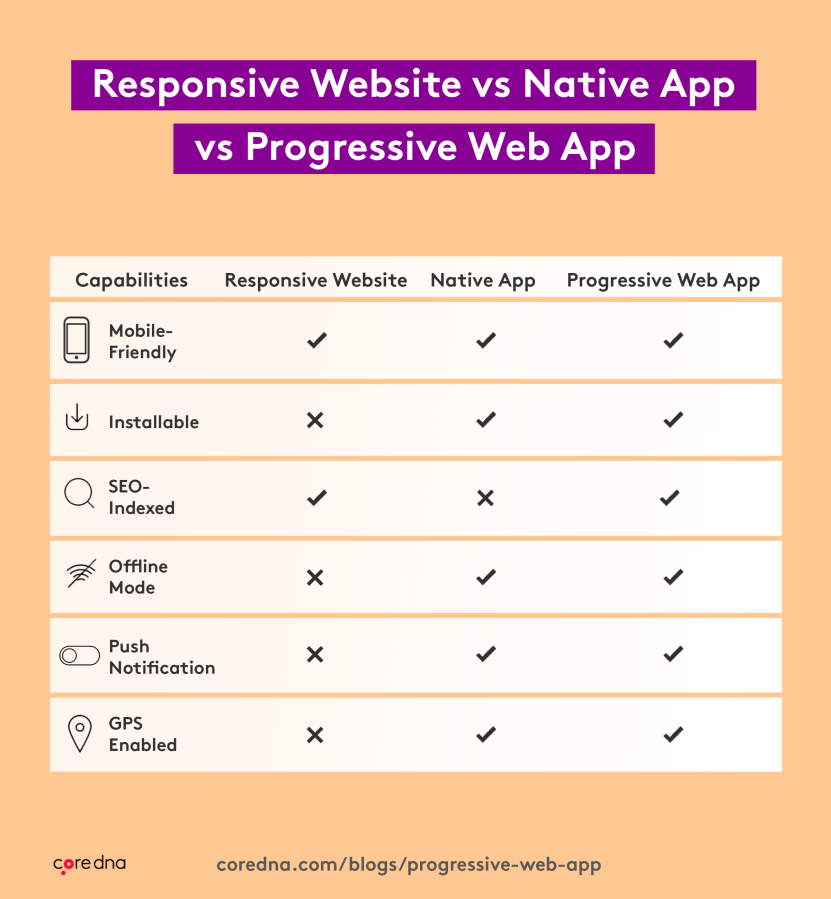
How does a Progressive Web App (PWA) work?
PWAs can range in functionality from barebones to advanced features like geolocation and Bluetooth. The baseline technical requirements Google has defined for PWAs include:
1. Service worker
A service worker is JavaScript code that runs in the background of the PWA. Their primary use is to precache resources, so the web app loads fast and can even have offline functionality. After the website has been visited once, the service worker saves - or caches - critical assets like HTML files and images so that it doesn't need to make API calls to the backend as frequently next time the user visits. Service workers can be used for other tasks, however, such as push notifications and background data syncs.
2. Web manifest
The web manifest is a JSON file that defines the look and feel of the PWA when it's installed. It's used to customize things like the home screen icons and how the web app is launched. In general, the web manifest includes metadata like the app name, version, description, theme colors, and screen orientation. A web manifest is essential for creating a native-like app experience.
3. Transport Layer Security (TLS)
PWAs are required to communicate over HTTPS by having an SSL certificate installed on its web server. The SSL certificate creates a secure, encrypted connection between the frontend app and backend server. These requirements leverage the TLS protocol to ensure secure data transfers when the web app communicates with the backend eCommerce and CMS systems. This is crucial for keeping user information safe and is critical for eCommerce stores that handle customer credit card information.

The ultimate guide to Progressive Web App (PWA)
Everything you need to know about Progressive Web App (PWA); how does it work, the pros and cons, and many more.
The benefits of a Progressive Web App
While moving to a PWA will likely require some development work, there are enormous advantages in putting in the effort from faster loading and SEO benefits to reduced data needs and no app store requirements.

(8 benefits of Progressive Web Apps (PWA))
1. It's faster
With pre-caching, PWAs load fast even with poor connectivity on mobile devices. Many users will abandon a website that takes more than a few seconds to load, so speed is crucial for your business. Faster loading also translates to better indexing by search engines, and therefore, PWAs have considerable SEO advantages.
2. It's better for SEO
From an SEO standpoint, search engines view PWAs as websites and fully index them. Native apps, on the other hand, are not indexed and will not impact your SERP. In addition, PWAs are just a website, so users can share the link and combined with an optimized backlinking strategy can boost SEO rankings in a way that native apps can't.
3. It reduces data needs
Caching reduces the data transfer needs of your app. Fewer API requests reduce your need for server capacity and bandwidth to support your application. Your customers will also use less of their mobile data plan while browsing your web app. Along with this, PWAs usually take up less storage space, so users are more likely to download them than native apps.
4. There's no need for app stores
One of the greatest competitive advantages of PWAs over native apps is discoverability. PWAs aren't downloaded via app stores, so there's less friction for potential users to install the app. You also don't need to build, submit for review, and market separate apps for iOS and Android. Users that are already on your website have the option to install the app, giving them a better user experience and leading to a higher chance of adoption.
5. It reduces development costs
Native apps require entirely different tech stacks to develop, while PWAs use standard web technologies like HTML, CSS, and JavaScript that are well-know by frontend developers. Upgrading your existing website with PWA features is much cheaper than developing native apps from scratch, and any updates you need to make are instant without requiring review by Apple or Google.
6. It leads to better user experiences
PWAs are both responsive and progressive. Responsive means they're designed to work on whichever devices users have from phones to tablets or desktops. PWAs also built with the web development idea of progressive enhancements. This means they focus first on core content and features, and if the user's browser and internet connection meet the necessary more advanced features become available. These two tenets ensure a better digital experience for all users.
7. It leads to better engagement
There's no doubt that PWAs lead to better customer engagement. The caching and offline capabilities of PWAs mean users can browse the eCommerce store at any time, and won't abandon the web app from long loading times. Features like push notifications and location tracking let marketers provide relevant content to mobile users whenever and wherever. These factors make PWAs great for delivering enhanced digital experiences to shoppers.
8. It can increase conversions
For eCommerce stores, moving to a PWA can drastically improve conversions. AliExpress, for example, increased its conversion rate for new users by 104% with its new PWA. Along with better engagement, PWAs can offer simplified user experience and checkout process that efficient moves user down the sales funnel.
Two drawbacks of Progressive Web Apps
There are significant benefits for eCommerce companies to move to PWAs, but there are still some drawbacks.
1. You lose app store traffic
While there may be SEO benefits of a PWA, you're still losing out on the traffic from users searching within the Google Play Store or iOS App Store. These are generally massive audiences, and users may wonder why you don't have an app or may demand that you provide a native app.
2. Devices have access restrictions
PWAs may be able to use features like GPS or Bluetooth, but it depends. For one, users may need to allow you to access certain features to protect them from security risks. In other cases, mobile vendors limit web apps from accessing device capabilities because the developers aren't paying to make the app available on their platform. Apple is particularly limiting in this respect.
Five ways a PWA can improve your eCommerce shopping experience
While most organizations can benefit from moving to a PWA, there are particular features eCommerce companies should consider to offer a better digital shopping experience for their customers.
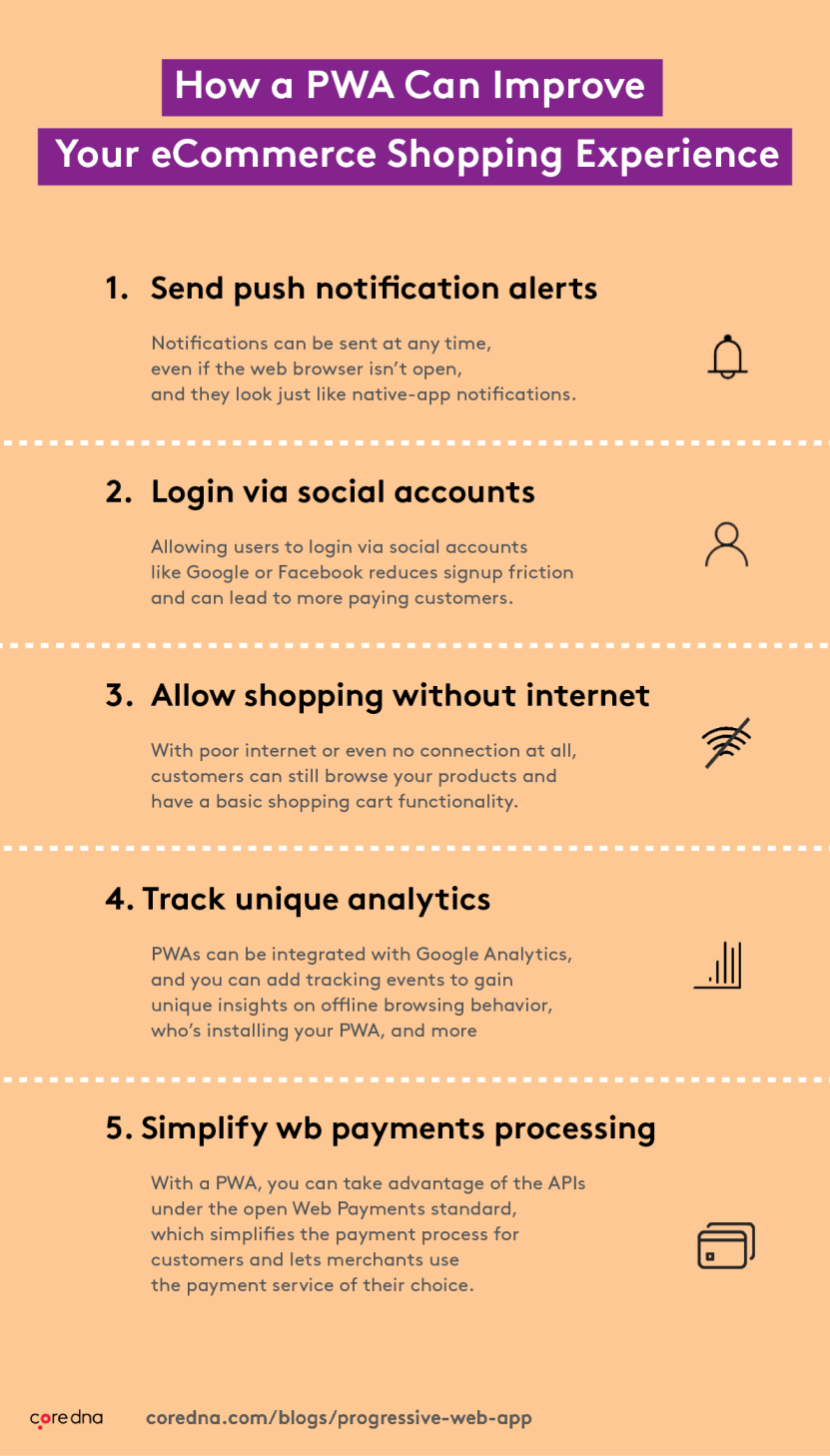
(How a Progressive Web App improves eCommerce experience)
1. Send push notifications or alerts
PWAs can send push notifications after users opt-in. Notifications can be sent at any time, even if the web browser isn't open, and they look just like native-app notifications. Businesses can connect with users and offer product promotions with push notifications to improve customer engagement and retention.
2. Login via social accounts
Using social integration is a powerful way to improve user engagement and customer acquisition. Allowing users to login via social accounts like Google or Facebook reduces signup friction and can lead to more paying customers. Further integration with social media can include the ability to share wishlists and product reviews for greater brand awareness.
3. Allow shopping without internet
PWAs let you reach consumers in situations you couldn't before. With poor internet or even no connection at all, customers can still browse your products and have a basic shopping cart functionality. They'll also still see informative and relevant content in offline mode that's been delivered to them and been cached by the app.
4. Track unique analytics
What gets measured gets managed. With PWAs, that includes the challenge of tracking events that occur while offline. Luckily, PWAs can be integrated with Google Analytics, and you can add tracking events to gain unique insights on offline browsing behavior, who's installing your PWA, and more.
5. Simplify web payments processing
With native apps, eCommerce stores are limited in choosing a payment provider. On iOS, for example, Apple holds a monopoly on the payment service and charges fees for in-app purchases. With a PWA, you can take advantage of the APIs under the open Web Payments standard, which simplifies the payment process for customers and lets merchants use the payment service of their choice.
Progressive Web Apps (PWA) eCommerce case studies
We've explained the benefits PWAs bring to eCommerce, and the few drawbacks you'll face. Now let's see the results shifting to a PWA have brought three separate eCommerce businesses: Debenhams, AliExpress, and Flipkart.
1. Debenhams: 40% increase in mobile revenue
Debenhams is a long-standing British retailer with 178 locations in the U.K., Ireland, and Denmark. Over 57% of the company's online traffic was through its mobile channel, Debenhams struggled to make mobile conversions. That's why the company became the first UK retailer to invest in a PWA and reduced the time from browser to purchase by two to four times. Debenhams' new PWA has since increased mobile revenue by 40% and increased overall conversions for the retailer by 20%.
2. AliExpress: 84% increase in iOS conversions
AliExpress is a Chinese international marketplace that has a fast-growing mobile user base. The company's mobile app was fast, but it was challenging to get users to install the app and expensive to engage with them. AliExpress built a new PWA that provided mobile features while making the app more accessible to potential users. As a result, the company saw a 104% additional new users and an 84% increase in its iOS conversion rate.
3. Flipkart: 40% higher re-engagement rate
Flipkart is the largest eCommerce website in India. The company initially focused solely on a mobile app but found it challenging to provide an engaging experience. Instead, the company decided to release Flipkart Lite, a PWA that's led to a 70% higher conversion rate for users that install the app and a 40% higher re-engagement rate.
Watch video demo
Making the transition
With mobile shopping on the rise, it's crucial that eCommerce stores are mobile-first. Beyond that, the native-like features of a PWA can lead to higher customer engagement and greater conversions, without the drawbacks of pure native apps.
Core dna embraces PWA technologies, with its headless architecture. Our platform has the backend features necessary to manage massive product catalogs, work with multiple payment gateways and global carrier services, and deliver personalized content. Combining Core dna with PWA features can transform the way your eCommerce store does business.
Responsive Design Vs A Progressive Web App
Source: https://www.coredna.com/blogs/progressive-web-app
Posted by: bryanlatiff88.blogspot.com

0 Response to "Responsive Design Vs A Progressive Web App"
Post a Comment